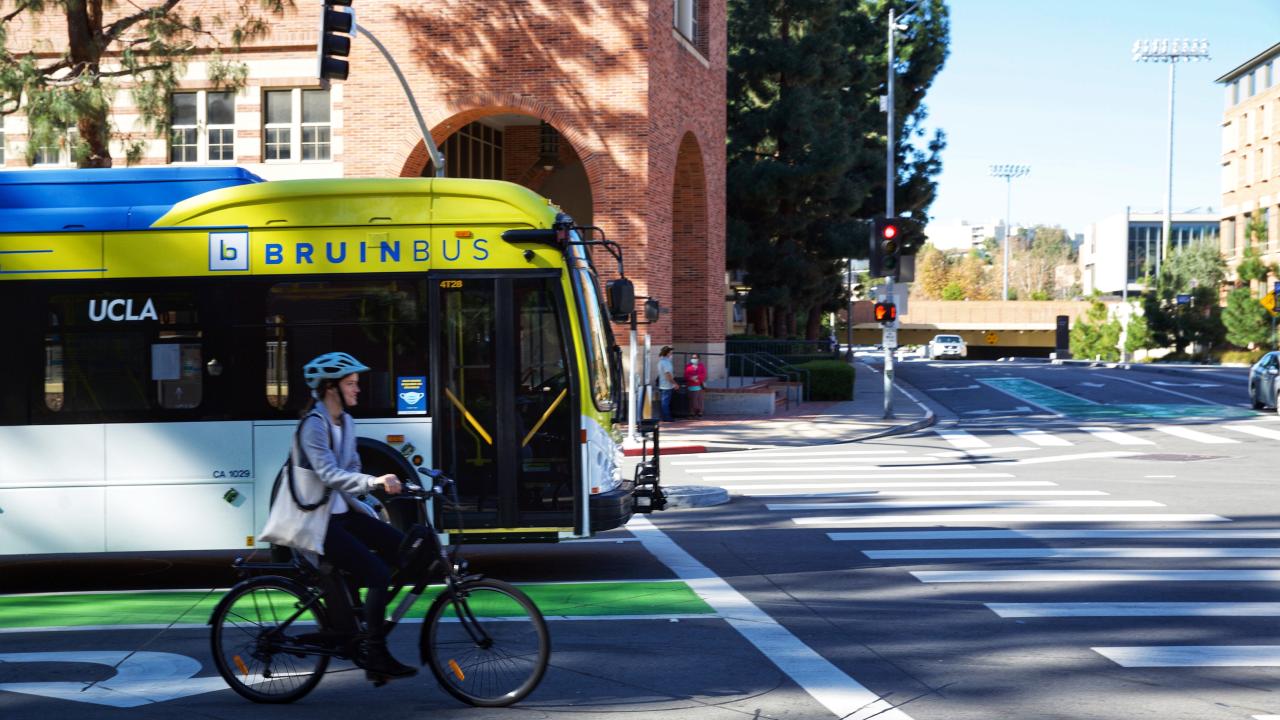The next major climate science report was released, and the assessment is worrisome. Increased greenhouse gas emissions are detrimentally impacting air quality. But do not despair, Bruins. There are fixes, particularly when it comes to transportation. While climate change can seem scary, some negative impacts can be averted if action is taken, like shifting to sustainable transportation.
In Los Angeles, the second-largest metropolitan region in the country, there is a real opportunity to lessen the impact of warming. Walking, biking, and taking transit all cut back on carbon pollution. Fewer personal vehicles on the road help every L.A. resident — a population of three million and counting. With cities like L.A. contributing 70% of the world's GHG emissions, Angelenos need to start stepping out of their cars.
Human-powered, active mobility like a walk or bike ride is the most sustainable — they're the best options for you and the environment.
Walking and biking make individuals and communities healthier by reducing air pollution. Choosing to walk or bike, even for only a few trips, can reduce the carbon footprint of an average household by up to 1,000 pounds of emissions annually.
Riding public transportation produces lower emissions (per passenger mile) than private vehicles. Taking transit for even just a few trips can lower the carbon footprint of an average household by up to 3 tons of emissions annually.
With LA Metro, Santa Monica Big Blue Bus, and Long Beach Transit rolling out battery-electric zero-emission buses, mass transit is getting even better for the environment. And if you are in the market for a new car, consider also electrifying your transportation. Driving all-electric eliminates exhaust.
Carpooling is another way to lower your carbon footprint. And at UCLA, the carpool permit is offered at a reduced rate.
A remarkable happening from the early months of COVID in the spring of 2020 was clearer skies above the city. Tailpipe pollutants weren't clogging the air because people weren't driving as much. The pandemic also saw a massive increase in people walking and biking to get around. To get back to those days of improved air quality and to face the climate crisis, a switch to sustainable transportation is much needed.






